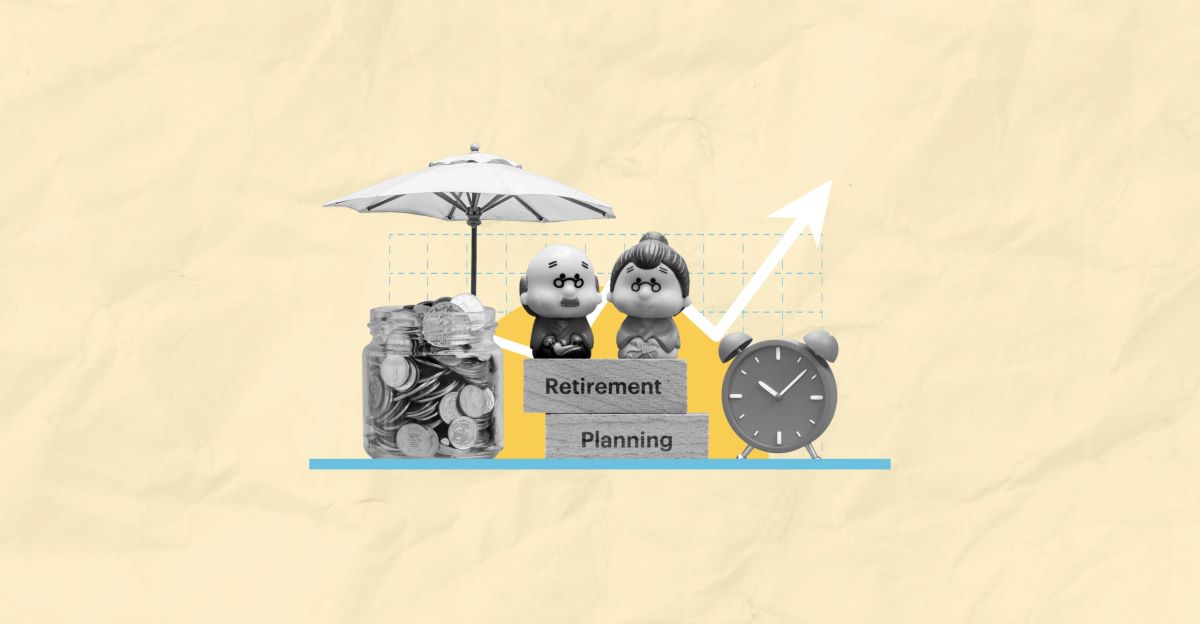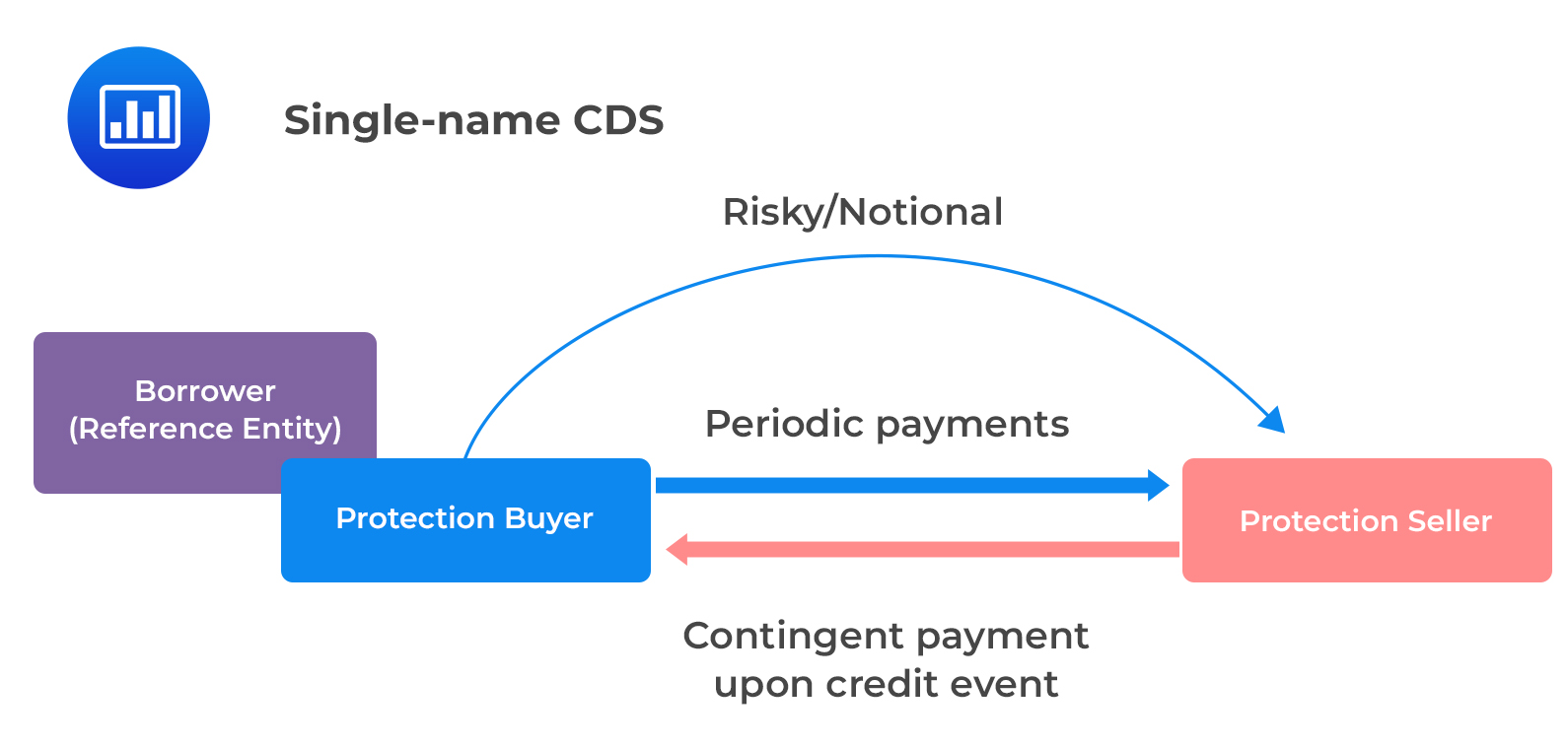

Finance
What To Do For Retirement Planning
Published: January 21, 2024
Looking to secure your financial future? Learn the key steps for retirement planning and take charge of your finances with expert advice in finance.
(Many of the links in this article redirect to a specific reviewed product. Your purchase of these products through affiliate links helps to generate commission for LiveWell, at no extra cost. Learn more)
Table of Contents
- Introduction
- Importance of Retirement Planning
- Assessing Your Financial Situation
- Setting Retirement Goals
- Saving for Retirement
- Investment Options
- Managing Debt
- Considering Insurance Coverage
- Estate Planning
- Understanding Retirement Accounts
- Social Security and Medicare
- Working with a Financial Advisor
- Monitoring and Adjusting Your Retirement Plan
- Conclusion
Introduction
Retirement is a phase in life that many of us look forward to. It’s a time when we can finally kick back, relax, and enjoy the fruits of our labor. However, to ensure a comfortable retirement, it’s crucial to engage in effective retirement planning. As the saying goes, “Failing to plan is planning to fail.” This holds true when it comes to securing financial stability during your golden years.
Retirement planning is the process of determining your retirement income goals and creating a roadmap to achieve them. It involves evaluating your financial situation, setting realistic retirement goals, saving and investing strategically, managing debt, considering insurance coverage, understanding retirement accounts, and making informed decisions about Social Security and Medicare.
While retirement planning may seem daunting, the benefits are invaluable. By starting early and making smart financial choices along the way, you can increase your chances of enjoying a worry-free retirement. The earlier you begin retirement planning, the more time you have to grow your wealth through compounding and take advantage of tax-efficient strategies.
This comprehensive guide aims to provide you with the knowledge and tools to effectively plan for your retirement. Whether you’re just starting your career or approaching retirement age, it’s never too early or too late to begin the process. So let’s dive in and explore the different aspects of retirement planning to help you secure a financially stable and fulfilling retirement.
Importance of Retirement Planning
Retirement planning is crucial for several reasons. Firstly, it allows you to maintain your desired standard of living when you stop working. By estimating your future expenses and income, you can ensure that you have sufficient funds to cover your day-to-day expenses, healthcare costs, and leisure activities. Without proper planning, you risk facing financial difficulties and having to make sacrifices in the later years of your life.
Secondly, retirement planning provides you with financial security and peace of mind. It allows you to create a safety net, ensuring that you have emergency funds to handle unexpected expenses or life events. By setting aside money in retirement accounts, such as individual retirement accounts (IRAs) or employer-sponsored 401(k) plans, you can build a nest egg that will provide a steady income stream during your retirement years.
Moreover, retirement planning empowers you to take control of your financial future. It allows you to have a clear understanding of your financial situation, including your assets, debts, and savings. By assessing your financial health, you can identify areas that require improvement and develop strategies to achieve your retirement goals. This sense of control and organization can alleviate stress and provide a sense of confidence in your ability to handle financial challenges.
Additionally, retirement planning enables you to take advantage of tax-efficient strategies and investment opportunities. By utilizing retirement accounts, such as traditional or Roth IRAs, you can benefit from tax advantages, such as tax-deferred growth or tax-free withdrawals. Furthermore, planning for retirement allows you to allocate your investments wisely, diversify your portfolio, and potentially earn higher returns over time.
Lastly, retirement planning is essential for leaving a legacy for your loved ones. By carefully considering estate planning, including wills, trusts, and beneficiaries, you can ensure that your assets are distributed according to your wishes. This provides peace of mind, knowing that your family and beneficiaries will be taken care of after your passing.
Overall, retirement planning is not just about the financial aspect. It’s about creating a roadmap to lead a fulfilling and worry-free retirement. By taking the time to plan and make informed decisions, you can set yourself up for a comfortable future, enjoy your retirement years to the fullest, and leave a positive legacy for the ones you care about.
Assessing Your Financial Situation
Before diving into retirement planning, it’s crucial to assess your current financial situation. Understanding where you stand financially will help you set realistic retirement goals and develop a personalized plan. Here are some key steps to assess your financial situation:
- Evaluate your income: Start by determining your current income from all sources, including your salary, investments, and any other sources of revenue. Consider your annual salary, bonuses, and any other regular income you receive.
- Analyze your expenses: Take a close look at your monthly expenses. Track where your money is going, including fixed expenses like rent or mortgage payments, utility bills, and insurance premiums, as well as variable expenses such as groceries, entertainment, and dining expenses. This will give you an idea of your spending habits and help identify areas where you can potentially reduce expenses.
- Calculate your net worth: Determine your net worth by subtracting your liabilities (such as outstanding debts) from your assets (such as savings, investments, and property). This will give you a snapshot of your overall financial health and provide a starting point for retirement planning.
- Consider your debts: Take stock of any outstanding debts, such as credit card debt, student loans, or mortgage payments. Analyze the interest rates and repayment terms associated with each debt. Developing a plan to manage and reduce debt is crucial to achieving financial security in retirement.
- Assess your savings and investments: Review your existing savings and investment accounts, such as savings accounts, certificates of deposit (CDs), stocks, bonds, and retirement accounts (e.g., 401(k), IRA). Determine the balance and the rate of return on your investments. This will help you gauge your progress towards your retirement goals and identify potential areas for improvement.
- Consider other financial obligations: Take into account any other financial obligations you may have, such as child support, alimony payments, or caring for aging parents. These expenses can have an impact on your retirement planning and need to be factored into your overall financial picture.
By thoroughly assessing your financial situation, you gain a clear understanding of your current financial standing and the areas that require attention. This knowledge will serve as a foundation for the subsequent steps in your retirement planning journey, empowering you to make informed decisions and set realistic goals.
Setting Retirement Goals
Once you have assessed your financial situation, the next step in effective retirement planning is to set clear and achievable retirement goals. Setting retirement goals allows you to define what you want your retirement to look like and provides you with a target to work towards. Here are some key considerations for setting retirement goals:
- Define your retirement lifestyle: Think about the type of lifestyle you envision for your retirement. Consider factors such as where you want to live, the activities you want to pursue, and the level of financial independence you desire. It’s important to have a clear idea of what you want to achieve during your retirement years.
- Estimate your retirement expenses: Determine your expected expenses during retirement. Consider factors such as housing costs, healthcare expenses, travel and leisure activities, and any anticipated increases in healthcare or long-term care costs. It’s essential to factor in inflation and potential changes in your lifestyle to ensure your financial plan can accommodate your desired retirement lifestyle.
- Consider your desired retirement age: Decide at what age you want to retire. This can impact your savings and investment strategies, as well as your Social Security and Medicare planning. Keep in mind that retiring later can provide more time to save and potentially increase your Social Security benefits.
- Calculate your retirement income: Determine how much income you will need during retirement to cover your expenses. Take into account potential sources of income, such as Social Security benefits, pensions, rental income, and investment returns. Understanding your income needs will help you determine if you are on track to meeting your retirement goals.
- Set specific financial targets: Based on your expenses and income needs, set specific financial targets for your retirement savings. This can include a target amount you want to save for retirement, as well as milestones along the way to help track your progress. Consider consulting with a financial advisor to calculate an appropriate savings rate to help you reach your goals.
- Revisit and adjust your goals regularly: As you progress through life, your retirement goals may change. It’s important to revisit and adjust your goals periodically to ensure they remain aligned with your evolving circumstances and financial situation.
Setting retirement goals provides you with a clear direction and motivates you to take the necessary steps to achieve them. It helps you stay focused on your long-term financial well-being and ensures that you have a plan in place to support your desired retirement lifestyle. Remember, retirement is not a one-size-fits-all approach, so take the time to tailor your goals to your unique aspirations and circumstances.
Saving for Retirement
One of the most critical aspects of retirement planning is saving for retirement. Saving diligently and consistently is essential to build a strong financial foundation for your retirement years. Here are some strategies to help you save effectively:
- Start early: The earlier you start saving for retirement, the more time your investments have to grow. Even small contributions can accumulate over time due to compounding. Take advantage of the power of compounding by starting as soon as possible.
- Automate your savings: Set up automatic contributions to your retirement accounts, such as a 401(k) or IRA, directly from your paycheck or bank account. Automation ensures that you save consistently without relying on willpower and reduces the temptation to spend the money elsewhere.
- Take advantage of employer match: If your employer offers a retirement savings plan with a matching contribution, contribute enough to receive the maximum match. Employer matches are essentially free money that can significantly boost your retirement savings.
- Contribute to tax-advantaged retirement accounts: Maximize your contributions to tax-advantaged retirement accounts, such as a 401(k) or an IRA. These accounts offer tax benefits, such as tax-deferred growth or tax-free withdrawals, allowing your savings to grow more efficiently.
- Consider a diversified investment portfolio: Allocate your retirement savings across a diversified portfolio of investments. This can include a mix of stocks, bonds, mutual funds, and other assets that align with your risk tolerance and investment goals. Diversification helps reduce the risk by spreading your investments across different asset classes.
- Review and adjust your savings rate: Regularly review your savings rate and adjust it as needed. Aim to save at least 10-15% of your income for retirement. If you can save more, even better. As your income increases or your financial situation improves, increase your savings rate to accelerate your retirement savings.
- Cut back on unnecessary expenses: Look for opportunities to reduce discretionary expenses and save the difference for retirement. Evaluate your spending habits and identify areas where you can cut back without compromising your overall well-being. Small changes can add up to significant savings over time.
- Reassess and fine-tune your savings strategy: Regularly reassess your retirement savings strategy to ensure it aligns with your goals and changing circumstances. Consider consulting with a financial advisor who can help you optimize your savings plan and make adjustments as needed.
Saving for retirement requires discipline, perseverance, and a long-term mindset. By adopting these strategies and making retirement savings a priority, you can build a solid financial foundation to support your future needs and aspirations. Remember, every dollar you save today brings you closer to a financially secure and comfortable retirement tomorrow.
Investment Options
When it comes to retirement planning, selecting the right investment options is crucial. Investing wisely can help grow your retirement savings and potentially generate income to support your retirement lifestyle. Here are some common investment options to consider:
- Stocks: Investing in stocks allows you to become a partial owner of a company. Stocks have the potential for high returns but also come with higher risks. It’s important to diversify your stock holdings and choose a mix of large-cap, mid-cap, and small-cap stocks that align with your risk tolerance and investment goals.
- Bonds: Bonds are debt securities issued by governments, municipalities, and corporations. Bonds provide fixed income and can be less volatile than stocks. They are often considered safer investments. Consider investing in a mix of government, corporate, and municipal bonds to diversify your portfolio.
- Mutual Funds: Mutual funds pool money from multiple investors to invest in a diversified portfolio of stocks, bonds, or other assets. They offer diversification and professional management. Look for mutual funds that align with your investment objectives and consider the fund’s expense ratio, performance history, and investment strategy before investing.
- Exchange-Traded Funds (ETFs): ETFs are similar to mutual funds but trade on stock exchanges like individual stocks. They offer diversification, flexibility, and usually have lower expense ratios than mutual funds. Consider ETFs that track broad market indexes or specific sectors that align with your investment goals.
- Real Estate: Investing in real estate can provide income and potential appreciation over time. This can be done through direct ownership, real estate investment trusts (REITs), or real estate crowdfunding platforms. Real estate investments can diversify your portfolio and provide a hedge against inflation.
- Retirement Accounts: Maximize contributions to tax-advantaged retirement accounts such as IRAs and 401(k)s. Choose appropriate investment options within these accounts based on your risk tolerance and retirement goals. Consider a diversified mix of stocks, bonds, and other investment vehicles.
- Annuities: Annuities are insurance contracts that provide regular income payments in retirement. They can offer a guaranteed income stream but often come with fees and may lack flexibility. Consider consulting with a financial advisor to determine if an annuity aligns with your retirement objectives.
- Consult with a Financial Advisor: Consider working with a financial advisor who can provide personalized guidance based on your financial situation, risk tolerance, and retirement goals. They can help you select appropriate investment options, develop a customized investment portfolio, and regularly review your investments.
Remember, your investment strategy should be aligned with your risk tolerance and time horizon. Diversification is key to spreading risk and potentially maximizing returns. It’s important to regularly review and rebalance your portfolio to ensure it remains in line with your goals and risk profile. Consider consulting with a financial professional to help you make informed investment decisions and navigate the complexities of the financial markets.
Managing Debt
When planning for retirement, managing debt is a critical component that shouldn’t be overlooked. Carrying excessive debt can hinder your ability to save and invest for retirement. Here are some strategies to effectively manage debt:
- Create a debt repayment plan: Start by evaluating your outstanding debts and developing a plan to pay them off. Prioritize high-interest debts, such as credit card debt, and consider paying more than the minimum payment to reduce the overall interest paid and pay off debts faster.
- Consolidate or refinance high-interest debts: If you have multiple high-interest debts, consider consolidating them into a single loan or refinancing them to obtain a lower interest rate. This can help simplify payments and potentially decrease your monthly financial obligations.
- Reduce unnecessary expenses: Identify areas where you can cut back on discretionary spending to allocate more funds towards repaying your debts. This may involve downsizing your lifestyle temporarily to free up cash flow and accelerate your debt repayment efforts.
- Negotiate with creditors: If you’re struggling to make debt payments, reach out to your creditors to explore options such as debt restructuring, deferment, or hardship programs. They may be willing to work with you to create a more manageable payment plan.
- Avoid taking on new debt: While it may be tempting to use credit for immediate wants or expenses, try to avoid taking on new debt. Focus on paying off existing obligations before considering new credit.
- Consider professional help: If you’re overwhelmed by debt or struggling to find a solution, consider consulting a credit counseling agency or a financial advisor who specializes in debt management. They can provide guidance and help you develop a customized debt repayment strategy.
- Establish an emergency fund: Building an emergency fund can help prevent future debt accumulation. Having readily available savings can cover unexpected expenses, reducing the need to rely on credit cards or loans.
- Monitor your credit: Regularly check your credit reports to ensure accuracy and identify any discrepancies. Maintaining good credit will make it easier to obtain favorable interest rates for future loans or mortgages.
Effectively managing debt is essential for a secure and stress-free retirement. By tackling debt proactively, you can free up resources to save and invest for your retirement years. Remember, it’s never too late to start managing debt, and every step you take towards reducing debt brings you closer to financial freedom in retirement.
Considering Insurance Coverage
When planning for retirement, it’s important to carefully consider your insurance coverage to protect yourself and your assets. Insurance plays a crucial role in providing financial security and peace of mind. Here are some key insurance policies to consider:
- Health Insurance: Healthcare expenses can be a significant burden in retirement. Evaluate your options for health insurance coverage, including Medicare and supplemental plans. Consider factors such as premiums, deductibles, co-pays, and prescription drug coverage. It’s important to have adequate coverage to protect against high medical costs and ensure access to quality healthcare.
- Long-Term Care Insurance: Long-term care insurance helps cover the costs associated with long-term care services, such as nursing home care, assisted living facilities, or in-home care. As you age, the likelihood of needing long-term care increases. Having a long-term care insurance policy can help protect your retirement savings from being depleted by expensive care needs.
- Life Insurance: Life insurance is essential if you have dependents or outstanding financial obligations such as a mortgage or other debts. It provides a death benefit to your beneficiaries in the event of your passing, helping to replace lost income or cover expenses. Consider term life insurance or permanent life insurance options based on your needs and budget.
- Homeowners/Renters Insurance: Protecting your home and belongings is crucial. Homeowners or renters insurance provides coverage for damage to your property due to events like fire, theft, or natural disasters. Review your policy to ensure it adequately covers your property and possessions.
- Auto Insurance: If you own a vehicle, maintaining auto insurance is not only a legal requirement but also provides financial protection in case of accidents, theft, or damage. Review your auto insurance policy to ensure it covers your needs and consider adding uninsured/underinsured motorist coverage for additional protection.
- Liability Insurance: Liability insurance protects you from financial loss if you are found legally responsible for causing injury or damage to others. Consider personal liability coverage, including umbrella insurance, to provide additional liability protection outside of your home or auto insurance policies.
- Disability Insurance: Disability insurance provides income replacement if you are unable to work due to an illness or injury. It is particularly important during your working years before retirement, as it safeguards your income and helps you continue to save for retirement.
- Consult with an Insurance Professional: Insurance needs can vary depending on your specific circumstances. Consider consulting with an insurance professional who can assess your situation and recommend appropriate coverage options based on your retirement goals, assets, and potential risks.
Insurance coverage is a fundamental aspect of retirement planning. It helps protect your financial well-being and provides a safety net for unforeseen circumstances. Assess your insurance needs and make informed decisions to ensure you have the coverage necessary to safeguard your assets and enjoy a secure retirement.
Estate Planning
When preparing for retirement, estate planning is an essential step to protect your assets and ensure your wishes are carried out after your passing. Estate planning involves creating a comprehensive plan that addresses the distribution of your assets, healthcare decisions, and the guardianship of dependents. Here are some key considerations for effective estate planning:
- Write a Will: A will is a legal document that outlines how you want your assets distributed upon your death. It allows you to specify beneficiaries, name an executor, and appoint guardians for minor children. Without a will, your assets may be distributed according to state laws, which may not align with your preferences.
- Consider a Trust: Trusts can provide additional control and flexibility in distributing your assets. They can help minimize estate taxes, avoid probate, and provide ongoing management of assets for beneficiaries. Consult with an estate planning attorney to determine if a trust is appropriate for your situation.
- Designate Beneficiaries: Review and update beneficiary designations on retirement accounts, life insurance policies, and other assets. These designations will determine who receives these assets upon your passing, regardless of what your will says.
- Establish Power of Attorney: Assign powers of attorney to trusted individuals who can make financial and healthcare decisions on your behalf if you become incapacitated. This ensures that your affairs are managed according to your wishes.
- Create a Living Will or Advance Healthcare Directive: Outline your healthcare preferences in a living will or advance healthcare directive. These documents provide guidance on medical treatments and end-of-life decisions when you are unable to communicate them yourself.
- Review and Update Regularly: Estate planning is not a one-time task. Review and update your estate plan regularly, especially after major life events such as marriage, divorce, the birth of children, or significant changes in your financial situation.
- Consider Estate Taxes: If your estate is large enough to trigger estate taxes, consult with an estate planning professional to explore tax planning strategies that can minimize the tax burden on your heirs.
- Communicate Your Wishes: It’s important to communicate your estate plan with your loved ones and the relevant individuals involved, such as your executor and power of attorney. This will ensure everyone is aware of your wishes and can help avoid potential conflicts or misunderstandings later on.
- Consult with an Estate Planning Attorney: Given the complexities of estate planning, it’s wise to seek guidance from an experienced estate planning attorney. They can provide expert advice tailored to your specific circumstances and help you navigate the legal requirements.
Estate planning allows you to have control over your assets, provide for your loved ones, and ensure a smooth transfer of your wealth. By addressing these key components of estate planning, you can have peace of mind knowing that your wishes will be honored, and your loved ones will be taken care of according to your desires.
Understanding Retirement Accounts
Retirement accounts are powerful tools that can help you build wealth and provide income during your retirement years. Understanding the different types of retirement accounts available can significantly impact your retirement savings. Here are some common retirement accounts to be familiar with:
- Employer-Sponsored Retirement Accounts: Many employers offer retirement savings plans such as 401(k) or 403(b) plans. These accounts allow you to contribute a portion of your pre-tax income, reducing your taxable income in the present. Some employers may even match a portion of your contributions, providing an extra boost to your savings.
- Individual Retirement Accounts (IRAs): IRAs are individual retirement accounts that allow you to save for retirement on your own. Traditional IRAs offer tax-deferred growth, meaning your contributions are tax-deductible, and your investment earnings grow tax-free until withdrawal. Roth IRAs, on the other hand, offer tax-free growth and tax-free qualified withdrawals, but contributions are made with after-tax dollars.
- Simplified Employee Pension (SEP) IRA: SEP IRAs are retirement plans for small businesses and self-employed individuals. Contributions to SEP IRAs are tax-deductible, and earnings grow tax-deferred. SEP IRAs have higher contribution limits than traditional or Roth IRAs.
- Self-Employed 401(k) or Solo 401(k): These retirement plans are designed for self-employed individuals or small business owners with no employees other than a spouse. They allow for higher contribution limits and may offer both pre-tax and Roth contribution options.
- Profit-Sharing Plans: Profit-sharing plans are employer-sponsored retirement plans that allow employers to make contributions to their employees’ retirement accounts based on company profits. These contributions are typically discretionary and can vary from year to year.
- Thrift Savings Plan (TSP): The TSP is a retirement savings plan for federal government employees, including members of the military. It operates similarly to a 401(k) plan and offers pre-tax and Roth contribution options.
Each type of retirement account has its own rules, contribution limits, and tax implications. It’s important to familiarize yourself with the specific details of the accounts you have or plan to open. Additionally, consider consulting with a financial advisor or tax professional to fully understand the benefits and limitations of each retirement account and how they fit into your overall retirement plan.
Understanding retirement accounts is essential for maximizing your retirement savings and optimizing your tax strategies. By taking advantage of these accounts, you can benefit from tax advantages, employer contributions, and the power of compound growth to build a substantial nest egg for your retirement years.
Social Security and Medicare
Social Security and Medicare are two government programs that play a crucial role in retirement planning. Understanding how these programs work and what benefits they offer is essential for effectively managing your retirement income and healthcare costs. Here’s an overview of Social Security and Medicare:
Social Security:
Social Security is a federal program that provides income to eligible individuals and their dependents during retirement, disability, or in the event of the beneficiary’s death. Here are some key points to consider:
- Eligibility: To be eligible for Social Security benefits, you need to earn enough credits by working and paying Social Security taxes. The number of credits required depends on your birth year.
- Retirement Benefits: Social Security retirement benefits are based on your average earnings over your working years. The age at which you can start receiving benefits depends on your birth year, with full retirement age ranging from 66 to 67. Starting early (as early as age 62) results in reduced monthly benefits, while delaying beyond full retirement age can increase benefits.
- Disability Benefits: Social Security provides disability benefits for individuals unable to work due to a disability. To qualify, you must meet strict criteria and have earned sufficient credits.
- Survivor Benefits: Social Security also provides benefits to the surviving spouses and dependents of deceased workers. The amount and eligibility criteria depend on various factors, including the deceased worker’s earnings history.
- Plan Ahead: Incorporate Social Security benefits into your overall retirement plan. Consider factors such as timing of benefits, spousal benefits, and the potential impact of early or delayed claiming strategies on your retirement income.
Medicare:
Medicare is a federal health insurance program primarily for individuals aged 65 and older, as well as certain younger individuals with disabilities. Here’s an overview of Medicare:
- Parts of Medicare: Medicare consists of different parts:
- Part A (Hospital Insurance): Covers inpatient hospital stays, skilled nursing facility care, hospice care, and some home health services.
- Part B (Medical Insurance): Covers doctor services, outpatient care, preventive services, and medical supplies.
- Part C (Medicare Advantage): Offered by private insurance companies, Medicare Advantage plans provide Part A and Part B coverage, and often include prescription drug coverage (Part D) as well.
- Part D (Prescription Drug Coverage): Provides prescription drug coverage, either through stand-alone prescription drug plans or as part of a Medicare Advantage plan.
- Enrollment: Eligible individuals can enroll in Medicare during their Initial Enrollment Period (IEP), typically around the time they turn 65. Failure to enroll during the IEP may result in late enrollment penalties.
- Costs and Coverage: Medicare coverage comes with premiums, deductibles, and co-pays. Private insurance plans can also offer additional coverage, such as Medigap plans, to help fill the gaps in Medicare coverage.
- Medicare Advantage: Medicare beneficiaries have the option to enroll in Medicare Advantage plans offered by private insurance companies. These plans often provide additional benefits and may have different costs compared to Original Medicare.
- Part D Prescription Drug Plans: It’s important to evaluate and choose the most suitable Part D plan based on your prescription drug needs. These plans have formularies that specify the covered drugs and associated costs.
- Medicare Supplements (Medigap): Medigap plans are supplementary insurance policies that help cover the out-of-pocket costs associated with Original Medicare. They can provide additional financial protection and peace of mind.
Be aware of key enrollment periods, understand the costs and coverage, and evaluate your options when it comes to Medicare. Consider reviewing your healthcare needs and consulting with a Medicare specialist or healthcare professional to make informed decisions about your coverage.
Social Security and Medicare are critical components of retirement planning. By familiarizing yourself with the eligibility criteria, benefits, and options available, you can make well-informed decisions to optimize your retirement income and healthcare coverage.
Working with a Financial Advisor
Working with a financial advisor can be instrumental in helping you navigate the complexities of retirement planning and make informed decisions to achieve your financial goals. A qualified financial advisor can provide personalized guidance and tailored strategies to optimize your retirement savings. Here’s why it’s beneficial to work with a financial advisor:
- Expertise and Experience: Financial advisors have extensive knowledge and expertise in retirement planning, investments, tax strategies, and other financial areas. They stay up to date with market trends, regulatory changes, and investment opportunities, providing you with valuable insights and guidance.
- Goal Setting and Planning: A financial advisor will work with you to define your retirement goals, assess your financial situation, and develop a comprehensive plan to achieve those goals. They take a holistic approach, considering factors such as your risk tolerance, time horizon, and unique circumstances.
- Investment Management: Financial advisors can help you build an investment portfolio tailored to your goals and risk tolerance. They evaluate various investment options, diversify your holdings, and monitor your investments to make adjustments as needed.
- Tax Planning: A financial advisor can help you implement tax-efficient strategies to minimize your tax liability and optimize your savings. They can navigate complex tax laws, identify opportunities for tax deductions, and determine the most advantageous retirement account contributions.
- Social Security and Medicare Guidance: Financial advisors can provide insights into optimizing Social Security benefits and help you navigate the complexities of Medicare coverage. They can help you understand claiming strategies, analyze the best time to start receiving benefits, and identify Medicare plans that align with your healthcare needs.
- Retirement Income Planning: A financial advisor can help you develop a strategy to generate income during retirement. They analyze various income streams, such as Social Security, pensions, investment withdrawals, and annuities, to create a sustainable and tax-efficient withdrawal plan.
- Risk Management and Insurance: Financial advisors can assess your insurance needs, including life insurance, long-term care insurance, and liability coverage. They can help you evaluate options, determine appropriate coverage levels, and ensure your insurance aligns with your overall financial plan.
- Education and Empowerment: Financial advisors not only provide guidance but also educate you about different financial concepts and strategies. They empower you to make informed decisions, enhance your financial literacy, and understand the reasoning behind their recommendations.
- Accountability and Peace of Mind: By working with a financial advisor, you have a partner who holds you accountable to your financial goals. They provide ongoing monitoring and reviews of your plan, making adjustments as needed. This brings peace of mind, knowing that you have a professional overseeing your progress.
When selecting a financial advisor, consider their credentials, experience, and alignment with your values and goals. Look for professionals who are fiduciaries, meaning they are legally obligated to act in your best interest. It’s essential to establish clear communication and trust with your advisor, as they will play a significant role in your retirement journey.
Remember, while a financial advisor provides valuable guidance, ultimately, you remain in control of your financial decisions. Working hand in hand with a trusted advisor can empower you to make well-informed choices, optimize your retirement plan, and increase your chances of achieving a secure and fulfilling retirement.
Monitoring and Adjusting Your Retirement Plan
Retirement planning is not a one-time task but an ongoing process that requires regular monitoring and adjustments. As you progress through your retirement journey, it’s crucial to review your plan periodically and make necessary modifications along the way. Here’s why monitoring and adjusting your retirement plan is essential:
- Market Changes: The financial markets are dynamic and can experience volatility. Monitoring your investments allows you to adjust your portfolio based on market conditions and potential opportunities. Regularly review your asset allocation, diversification, and investment performance to make informed decisions.
- Life Events: Life events, such as marriage, divorce, birth of a child, or the death of a loved one, can significantly impact your financial circumstances and retirement goals. Monitor and adjust your plan to address these changes, including updating your beneficiary designations, revising your savings targets, and reassessing your insurance needs.
- Healthcare Considerations: Healthcare expenses are a significant factor in retirement planning. Monitor your health and consider changes in your healthcare needs as you age. Review your health insurance coverage, Medicare options, and long-term care insurance to ensure adequate protection and plan for potential healthcare costs.
- Economic Factors: Economic conditions can influence interest rates, inflation, and your overall financial outlook. Monitor economic trends and assess their impact on your retirement plan. Adjust your savings rate, investment strategy, or retirement age to navigate economic fluctuations effectively.
- Retirement Income: Review your retirement income strategy regularly to ensure it remains aligned with your goals. Monitor changes in your expected income sources, such as Social Security benefits, pensions, and investment returns. Consider adjusting your withdrawal rate or exploring additional sources of income if needed.
- Tax Planning: Monitor tax laws and regulations that may impact your retirement savings and income. Stay informed about potential changes that could affect your tax liability and adjust your tax planning strategies accordingly. Consult with a tax professional to optimize your tax efficiency in retirement.
- Longevity and Long-Term Goals: Monitor your long-term goals and adjust your plan as you progress. Consider factors such as your desired retirement lifestyle, potential changes in expenses, and your life expectancy. Regularly assess your savings rate, investment performance, and retirement age to ensure you are on track to meet your goals.
- Seek Professional Guidance: Consider working with a financial advisor or seeking professional guidance to help monitor and adjust your retirement plan. They can provide objective insights, perform comprehensive reviews, and offer recommendations based on your changing needs and market conditions.
Regularly reviewing and adjusting your retirement plan allows you to stay proactive and adaptable in the face of changing circumstances. Remember that flexibility and agility are key to successful retirement planning. By monitoring your plan and making necessary adjustments, you can increase your chances of achieving your retirement goals and ensure a secure financial future.
Conclusion
Retirement planning is a vital process that requires careful consideration, proactive decision-making, and ongoing monitoring. By taking the time to assess your financial situation, set realistic goals, save diligently, invest wisely, manage debt, consider insurance coverage, plan your estate, understand retirement accounts, and navigate Social Security and Medicare, you can pave the way for a secure and fulfilling retirement.
Throughout your retirement planning journey, it is important to work with a financial advisor who can provide expertise, guidance, and tailored strategies to optimize your retirement savings and address your unique needs. Additionally, remember to regularly monitor and adjust your retirement plan in response to changing circumstances, market conditions, and personal goals.
Retirement is a time to pursue your passions, spend quality time with loved ones, and enjoy the fruits of your labor. By engaging in comprehensive retirement planning and making informed financial decisions, you can ensure a comfortable and financially stable future.
Remember, it’s never too early or too late to start planning for retirement. The key is to take action and be proactive in securing your financial well-being. By implementing the strategies and considerations outlined in this guide, you can set yourself up for a fulfilling and worry-free retirement.














